Jason Wall
Advisor: Neil Minuk
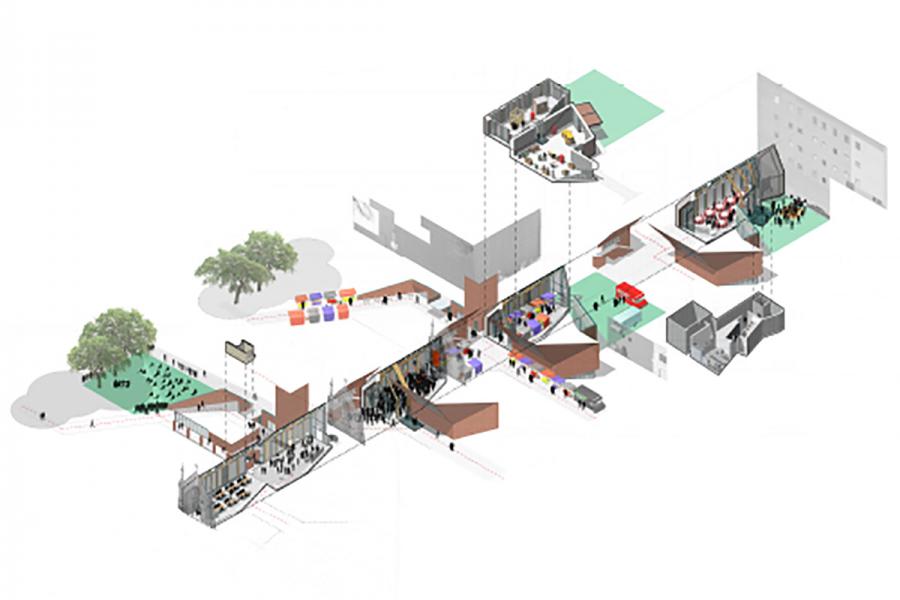
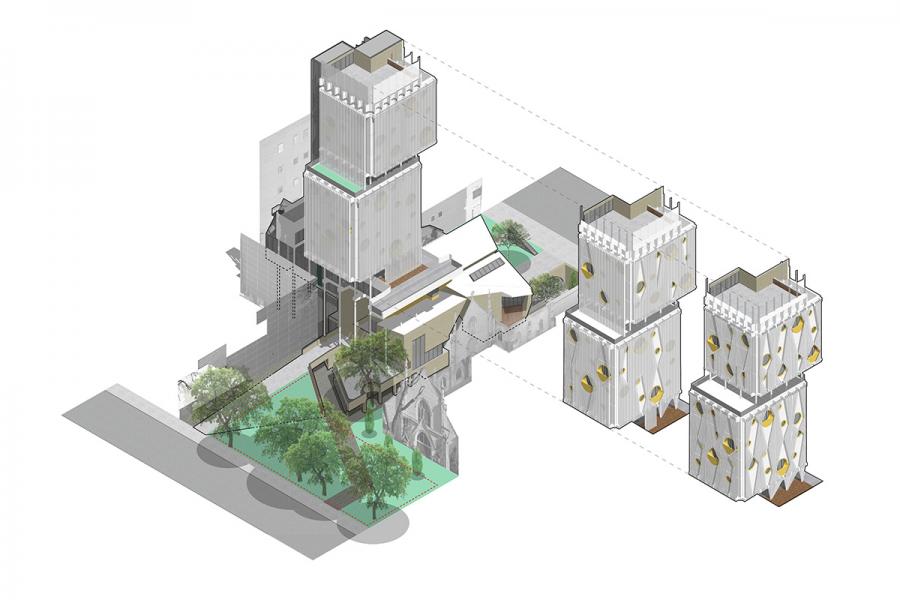
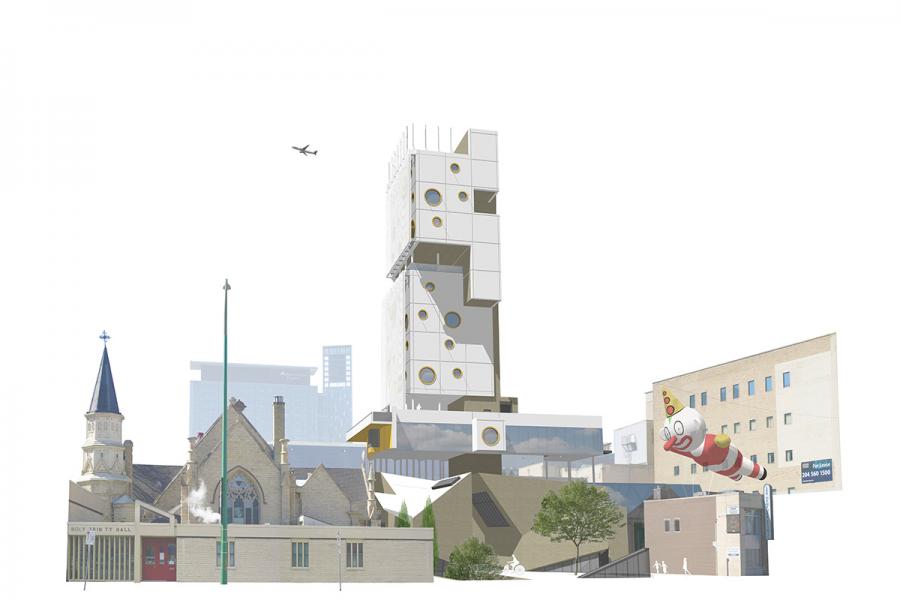
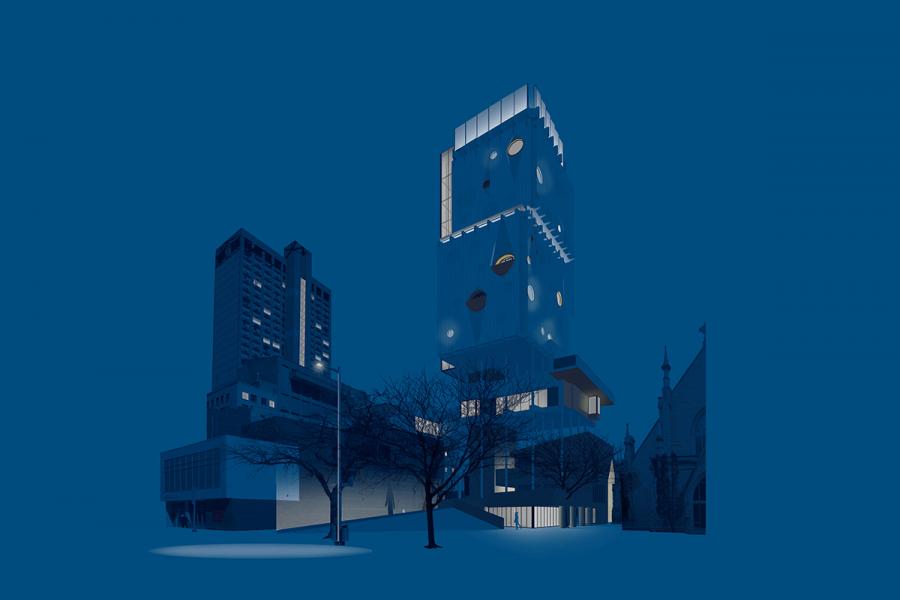
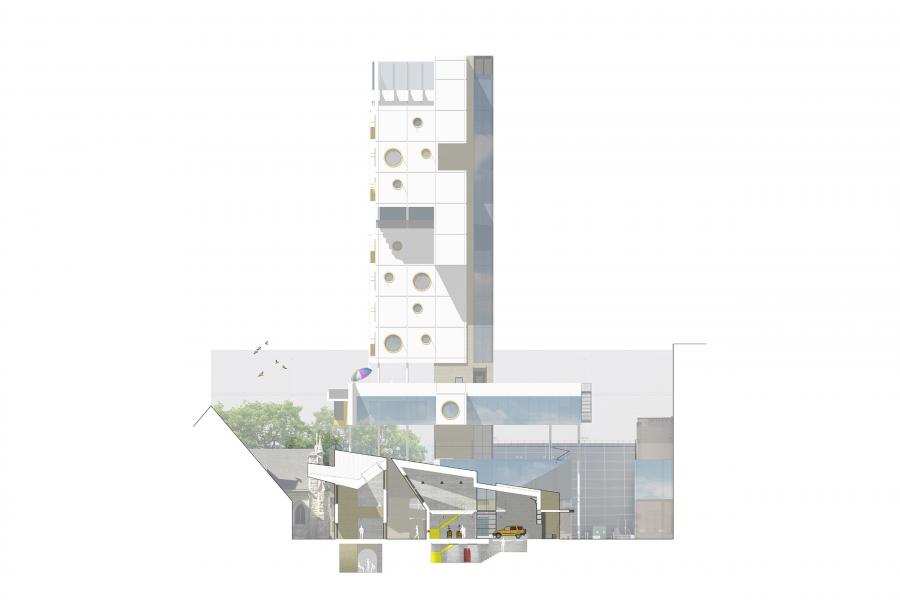
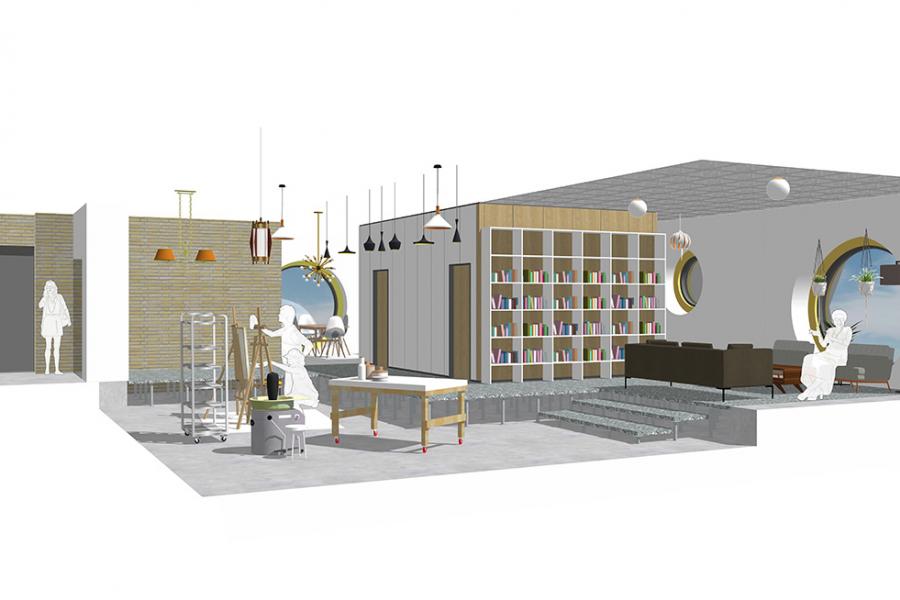
FLIP MODE: Subversion + Use
The contemporary urban environment is, for many North American cities, a homogenous condition born of modernist ideologies and capitalist ambitions which tend to inhibit authentic adaptation in favor of prescription and routine. Author and historian Iain Borden identifies this condition (via Lefebvre and Barthes) as the ‘urban degree zero’, in which urbanity has, “lost the characteristics of the creative oeuvre and of appropriation”.1 For this thesis, the fundamental concern with this zero condition is twofold; first, is the propensity for this overtly determinate condition to generate apathy towards manners of urban inhabitation, both transitory and permanent, as it is suggestive that one’s experiences there have been reduced to the most basic modes of function and exchange. What then, is the architect’s role in combating this condition? And how can architecture be designed (and built) which does not further propagate this zero point?
The area of downtown Winnipeg known as South Portage is this project’s primary concern, as this neighborhood is recognized as one fraught with the many banal characteristics resultant of ‘urban degree zero’. The intent of this thesis is therefore to propose a work of architecture which is subversive to Winnipeg’s urban paradigm in an effort to provoke a return to the city as oeuvre2; that is “the unintentional and collective work of art, richly significant yet embedded in everyday life.”3 The project operates under the premise that a return to this heterogeneous mode of urbanity will require the collaborative effort between architect and user. The aim is therefore not only to facilitate, but also to celebrate the critical role of the user in architectural space making. How then, can architecture be designed which facilitates an appropriative relationship with its inhabitant? What are the required conditions to inspire new and undirected interpretations of uses and space?
This thesis posits that urban architecture designed with indeterminacy as its core tenet will yield conditions more conducive to use, expression, vibrancy and life, through its potential to offer the urban inhabitant an atypically heightened level of agency over their environment. Notions of designed indeterminacy at multiple scales are explored through the proposal of a mixed-use architectural intervention which will aid in the support and development of the community at large by providing space for living, craft, leisure, dining, gathering, work and unforeseen and spontaneous use. To this end the architecture will challenge the typical modes of the city’s urbanity while endeavouring to attract and instill new users and rhythms to the downtown.
1Iain Borden, Skateboarding, Space and the City: Architecture and the Body. (New York: Berg, 2001), 229.
2Henri Lefebvre, Writings on Cities. Translated by Eleonore Kofman and Elizabeth Lebas. (Cambridge, Mass, USA: Blackwell Publishers, 1996), 101.
3Borden, Skateboarding, Space and the City, 214.
